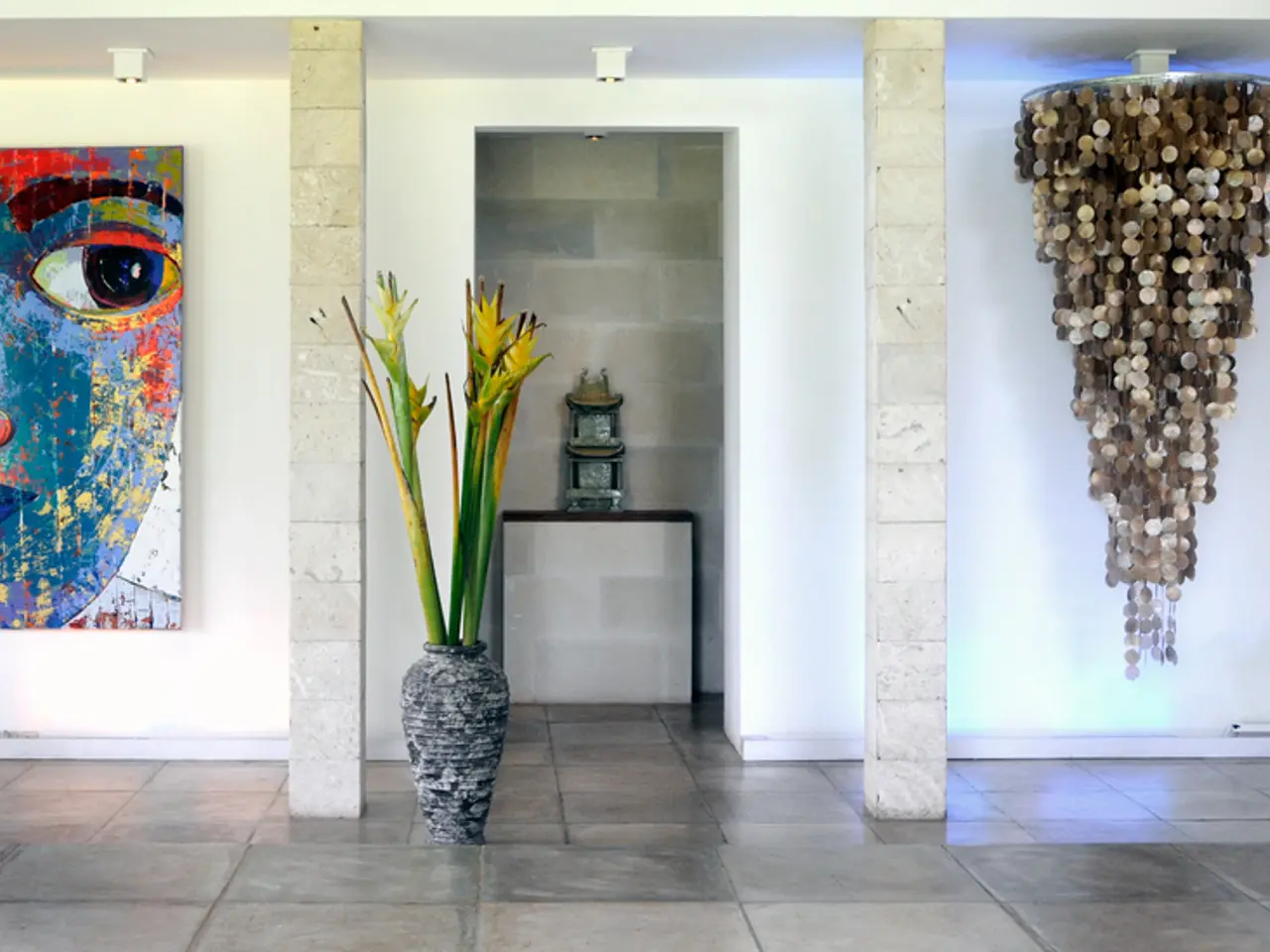Guidelines for Creating Depictive Love Spaces Without Slipping Into Stereotypes
=================================================================================
In the world of interior design, romance is no longer defined by traditional motifs like hearts and stereotypical "romantic" colors. Instead, designers are redefining romance as an atmosphere — intimate, sensory, attuned to detail, whether for two or for one.
This approach to romantic interiors emphasizes the creation of an atmosphere that feels intimate, sensual, and personal. By thoughtfully using atmosphere, scale, materials, lighting, sensory details, and ritual, designers can craft spaces that are both timeless and deeply appealing without relying on clichés.
Atmosphere: Treat romance as an expression of mood and ambiance. Use soft, layered lighting such as warm-toned lamps, candles, and dimmers to create a sensual glow. Embrace mystery and softness, for example through natural elements like fog-like translucent curtains or misty, diffused natural light to evoke calmness and intimacy.
Scale: Use human scale thoughtfully to make spaces feel cozy yet expansive enough to avoid claustrophobia. Furniture grouping can foster intimate conversation zones, and using soft, flowing drapery that billows across a large window can add elegance and a romantic novel-like atmosphere.
Materials: Select tactile, sensory-rich materials such as natural woods, soft linens, weighty curtains, raffia rugs, or plastered walls with soft matte finishes. Organic materials bring warmth and authenticity, while textured surfaces invite the touch, deepening the sensory experience.
Lighting: Light is crucial for romance. Combine ambient lighting with artistic fixtures and allow natural light to filter softly. Create layers of light to shape mood—candles, shaded lamps, and hidden light sources help draw the eye gently and create shadows and highlights that enhance a sense of depth and allure.
Sensory Details: Beyond visual elements, incorporate elements that stimulate other senses: soft textiles for touch, subtle natural or scented candles for smell, curated sounds like gentle music. These details enrich the ambiance beyond mere decoration and make the space immersive and personal.
Ritual: Embed spaces with meaning by designing areas that encourage personal or shared rituals—like a cozy nook for reading, a corner for morning coffee, or a spot for candlelit dinners. Rituals give emotional resonance to the space, heightening feelings of intimacy and connection.
Romantic palettes don't have to rely on red or pink; consider muted blush, deep aubergine, earthy terracotta, stormy blue-gray, and pair them with warm-toned neutrals. Designing for ritual, not just relationships, can elevate the everyday into something ceremonial, communicating romance as a lifestyle.
For clients cultivating self-romance, the layers of texture matter just as much. Custom candles, essential oils integrated into HVAC, or a cedar-lined wardrobe can enhance the scent in a romantic interior. In single-occupancy spaces, lighting can cue ritual and help clients transition from the world's pace to their own. Acoustics matter in romantic interiors; plush rugs, fabric wall treatments, and strategic partitions can help prevent echoing. Contrasting the raw with the refined in materials can add depth to a romantic interior.
In romantic interiors, lighting from multiple sources like candlelight, sconces, concealed LED strips, and dimmable lamps is used to create dimension. Intimacy in a space can be shaped through scale, such as using smaller seating clusters, generous armchairs, or a dining banquette tucked into a corner. Layer lighting to cultivate romance in shadows, without making the space too dark.
By focusing on embracing subtlety, privacy, softness, and sensory richness, designers can create romantic interiors that feel timeless, personal, and deeply appealing rather than predictable or overtly themed.
Read also:
- Budget cuts at federal and state levels jeopardize advancements in fighting HIV and AIDS within Dallas County
- Understanding Prediabetes: A Precursory Condition to Diabetes
- Debating the legitimacy of Borderline Schizophrenia as a distinct mental health disorder?
- Strategies for managing osteoporosis sans medication: Key points to remember








